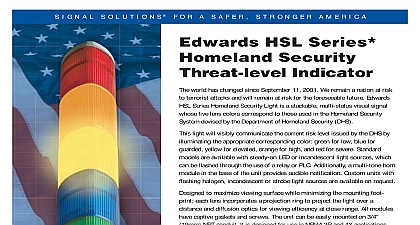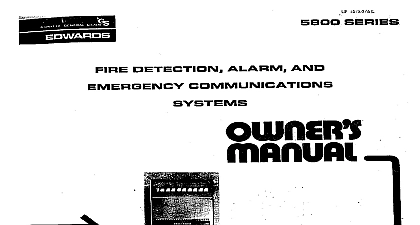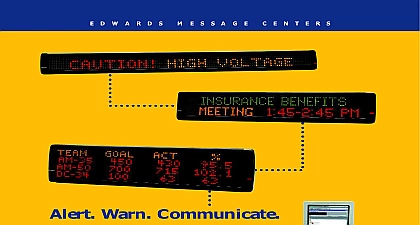Edwards Leoch Batteries MSDS

File Preview
Click below to download for free
Click below to download for free
File Data
| Name | edwards-leoch-batteries-msds-1539647028.pdf |
|---|---|
| Type | |
| Size | 662.40 KB |
| Downloads |
Text Preview
MATERIAL SAFETY DATA SHEET BATTERY CORPORATION LEAD ACID BATTERY MAINTENANCE FREE NON SPILLABLE 1 PRODUCT IDENTIFICATION Name Synonyms Description Family Name Number Issued Maintenance Free Lead Acid Batteries DJM DJ LP LPC LPL LPF LPG FT Series VRLA Sealed Recombinent Battery Non Spillable Battery Standby BATTERY CORPORATION Descartes Ranch CA 92610 001 949 588 5853 Phone 086 755 8603 6060 US Canada Mexico Phone 1 800 424 9300 International 1 703 527 3887 19 2009 001 949 588 5966 086 755 2606 7269 2 HAZARDOUS INGREDIENTS IDENTITY INFORMATION by Number Exposure Limits TLV ORAL Lead Lead Sulfuric Acid Separator Material Acrylonitrile Styrene ABS 5 3 PHYSICAL DATA DENSITY Sulfate Dioxide Acid Material ABS POINT 621.43 M 2138 B 554 M 115 203 B mg l 15 penetrating odor Metal crystals or brown Colorless Fibrous 1 of 5 SAFETY DATA SHEET BATTERY CORPORATION LEAD ACID BATTERY MAINTENANCE FREE NON SPILLABLE 4 FLAMMABILITY DATA Acid LIMITS batteries can emit hydrogen only if over charged voltage 2.4 VPC The gas enters the air through vent caps To avoid the chance of a fire or explosion sparks and other sources of ignition away from the Extinguishing Media Dry chemical foam CO2 vapors may be released case of fire wear self contained breathing apparatus 572 may release gases In case of fire wear positive pressure breathing apparatus compounds carbides sulfides peroxides phosphorus sulfurs ketone ester petrolatum of lead and sulfur temperature Sparks and other sources of ignition Acid metals strong bases most organic compounds dioxide trioxide hydrogen sulfide hydrogen smoking sparks etc from battery charging area Avoid mixing acid with chemicals acid will not polymerize Styrene 5 REACTIVITY DATA products to avoid products to avoid 6 HEALTH HAZARD DATA is considered as sealed non spillable one Under normal operating conditions the materials sealed inside should not be to people health Only when these materials exposed during production or under case broken condition or being heated fired they may be hazardous to people health of Entry Acid Harmful by all routes of entry Compounds Hazardous Exposure can occur only when product is heated oxidized or otherwise processed or damaged create dust vapor or fume Acid Breathing sulfuric acid vapors and mists may cause severe respiratory problems Compounds Dust or fumes may cause irritation of upper respiratory tract or lungs Separator Fiberglass is an irritant to the upper respiratory tract skin and eyes For exposure up to 10F use MSA with type H filters Above 10F use Ultra Twin with type H filter This product is not considered carcinogenic by NTP OSHA Contact Acid Severe irritation burns and ulceration Compounds Not absorbed through the skin Acid May cause severe irritation of the mouth throat esophagus and stomach Compounds May cause abdominal pain nausea vomiting diarrhea and severe cramping Acute ingestion should be by a physician Health Hazards Acid Severe skin irritation burns damage to cornea may cause blindness upper respiratory irritation Compounds May cause abdominal pain nausea headaches vomiting loss of appetite severe cramping muscular aches weakness and difficulty sleeping The toxic effects of lead are cumulative and slow to appear It affects the kidneys and central nervous systems The symptoms of lead overexposure are listed above Exposure to lead from a most often occurs during lead reclamation operations through the breathing or ingestion of lead dust or fumes 2 of 5 SAFETY DATA SHEET BATTERY CORPORATION LEAD ACID BATTERY MAINTENANCE FREE NON SPILLABLE Health Hazards acid Possible scarring of the cornea inflammation of the nose throat and bronchial tubes possible erosion of tooth Compounds May cause anemia damage to kidneys and nervous system and damage to reproductive system in both and females Conditions Generally Aggravated by Exposure lead and its compounds can aggravate chronic forms of kidney liver and neurological diseases Contact of battery acid with the skin may aggravate skin diseases such as eczema and contact dermatitis Overexposure to sulfuric mist may case lung damage and aggravate pulmonary conditions and First Aid Procedures Acid Remove to fresh air immediately If breathing is difficult give oxygen Compounds Remove from exposure gargle wash nose and lips consult physician Acid Do not induce vomiting consult a physician immediately Compounds Consult a physician immediately Acid Flush immediately with water for 15 minutes consult a physician Compounds Flush immediately with water for 15 minutes consult a physician Acid Flush with large amounts of water for at least 15 minutes remove any contaminated clothing If irritation seek medical attention Compounds Wash with soap and water 7 CARCINOGENICITY Acid The National Toxicological Program NTP and The International Agency for Research on Cancer IARC classified strong inorganic acid mist containing sulfuric acid as a Category 1 carcinogen a substance that is carcinogenic humans The ACGIH has classified strong inorganic acid mist containing sulfuric acid as an A2 carcinogen suspected carcinogen These classifications do not apply to liquid forms of sulfuric acid or sulfuric acid solutions contained a battery Inorganic acid mist sulfuric acid mist is not generated under normal use of this product Misuse of the such as overcharging may result in the generation of sulfuric acid mist Compounds Human studies are inconclusive regarding lead exposure and an increased cancer risk The EPA and the Agency for Research on Cancer IARC have categorized lead and inorganic lead compounds as a B2 probable possible human carcinogen based on sufficient animal evidence and inadequate human evidence 8 PRECAUTIONS FOR SAFE HANDLING AND USE or Leak Procedures case the release occurs stop flow of material contain absorb small spills with dry sand earth and vermiculite If possible neutralize spilled electrolyte with soda ash sodium bicarbonate lime etc Wear acid resistant clothing boots and face shield Do not allow discharge of unneutralized acid to sewer Disposal Method Batteries send to secondary lead smelter for recycling Follow applicable federal state and local regulations as in preceding step Collect neutralized material in sealed container and handle as hazardous waste as applicable copy of this MSDS must be supplied to any scrap dealer or secondary lead smelter with the battery Or consult state agency and or federal EPA and Storing batteries in a cool dry well ventilated area that are separated from incompatible materials and any activities which may flames sparks or heat Keep all metallic articles that could contact the negative and positive terminals on a battery create a short circuit condition Battery should be stored under roof for protection against adverse weather conditions and handle only in areas wit adequate water supply and spill control Avoid damage to battery case Safety to the


